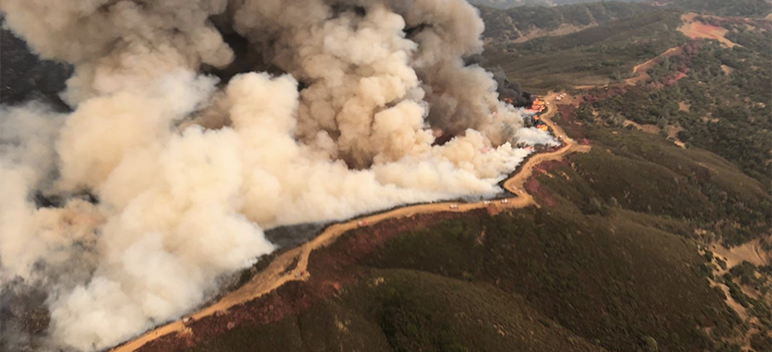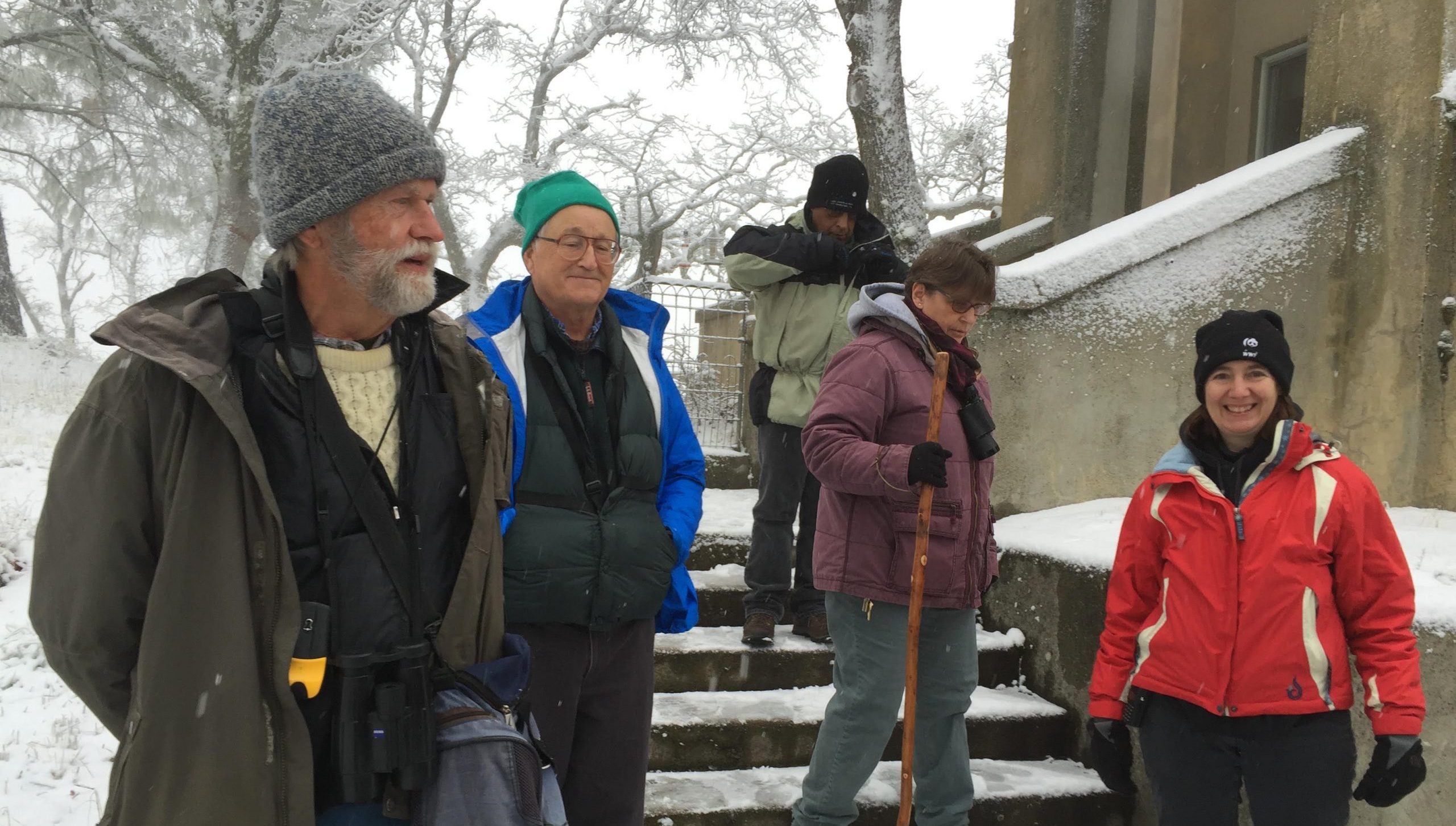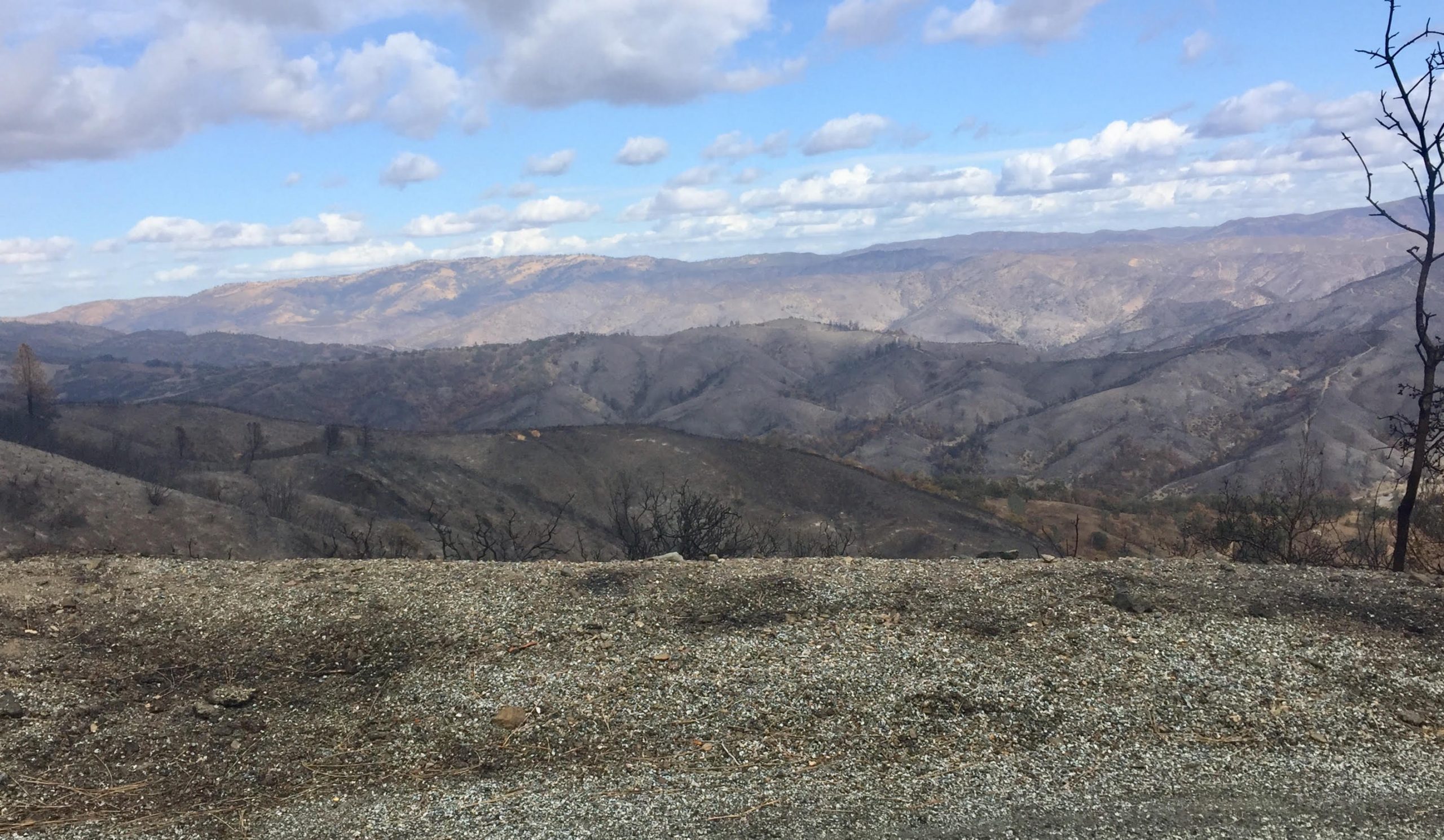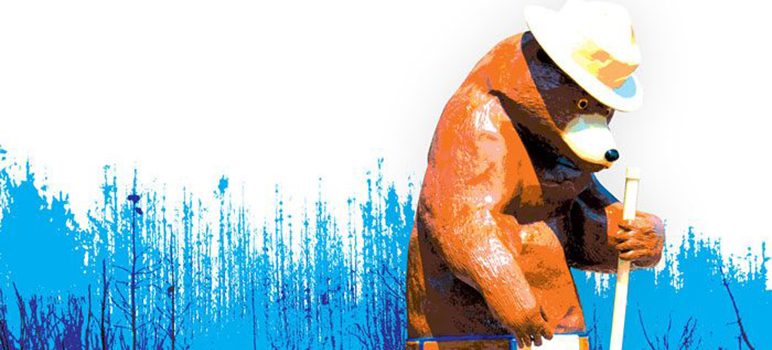Two years ago, my father and I visited my brother in South Lake Tahoe.
At the time he was leading bird surveys for Point Blue, a nonprofit research and conservation organization. He started working at Point Blue in 2014, first as an intern at their world-renowned Palomarin research station in the Point Reyes National Seashore, eventually becoming a crew leader for Point Blue in the Sierra Nevada.
We arrived at his house in South Lake just before sunset, and walked out into the open shrubland beyond his house.
It was mostly filled with manzanita and mountain whitethorn bushes, with tall Jeffrey pines and red fir dotting the flat expanse. This shrubland, my brother told us, was created by the Angora fire of 2007 which burned most of the 3,000-acre area to ash, destroying 254 homes in the process.
This kind of fire, one that kills almost all plant life (and homes) in its path, is called a high-severity fire, one that people often spend days or weeks trying to stop and control.
But for wildlife, this kind of fire isn’t all bad, my brother told me. Beyond the shrublands, in places burned completely black, wildlife thrives, including the black-backed woodpecker that wouldn’t even be there without such natural disasters.
It was a revelation: if people are successful in avoiding the one disaster—the fires that Smokey Bear entrusted us all to prevent—we may create another one for the birds that most of us wouldn’t even know about until it had happened.
What I found in my research about the fires, California’s policies and the little woodpecker that appears in the wake of disaster was a knotted plotline about decades of misunderstandings and avoidance when it comes to the state’s relationship with wildfires. The problem came about in part because of a narrative pushed in advertising campaigns and children’s movies that were simply too effective in convincing viewers that fires are bad. And it has remained at least partially because no one wanted to be held liable for the risks of changing the status quo.
But the state could now be on the precipice of evolving its wildfire policies, following one of the worst and longest wildfire seasons in California’s history. The changes on the table would likely be good for Californians—and certainly would be for the black-backed woodpecker. And that is where my research began.
Burned Edges

CLEARING THE AIR: The largest fire in state history, the SCU Complex burning east of San Jose, is almost under control. (Photo by Cal Fire)
After a fire, plants and animals—including western wood pewees, western bluebirds, morel mushrooms, wood-boring beetles, and, most notably, black-backed woodpeckers—move into the burned areas.
“Fire is an ancient part of California's ecosystem, and when we work very hard to prevent it—which may be good for urban development and housing and things like that—we're actually interrupting the natural cycle of wildlife in the area,” Matthew Dodder, executive director for the Santa Clara Valley Audubon Society said.
According to the Institute for Bird Populations (IBP), a nonprofit bird research organization that recently relocated from Point Reyes Station to Petaluma, black-backed woodpeckers are much more common in recently burned forests of the Sierra Nevada and rarer in unburned forests.
With their distinctive black backs that blend perfectly into burnt bark, this bird’s livelihood directly depends on severely burned forests, which is why they’ve become the symbol of the importance of wildfires throughout the Western U.S. in recent years.
“If we lost fire in the Sierra, we probably would lose the species,” Ryan Burnett, the senior Sierra group leader for Point Blue said.
Recent studies conducted by IBP only solidify this. According to an article written by IBP this year, scientists found that black-backed woodpeckers are more likely to nest and forage in areas of high-severity fires. “It’s a reflection of a long evolutionary history,” Dick Hutto, an emeritus professor at the University of Montana said.
Black-backed woodpeckers prefer to nest near low- and mixed-severity burned areas, or on the edges of large burns, where their young can find better cover from potential predators, the study notes. That’s why some scientists say the fires this season might not be a boon for the birds.
“Habitat is being created for them, I don’t have any questions about that,” Rodney Siegel, executive director of IBP, said in an interview. “The question is, if there are these incredibly large high-severity patches, like we saw for example in the King fire [of 2014], there may be areas that are just too far from low-severity or unburned forests, so they just can’t set up a home range there.”
But the size of the fire isn’t really the problem, Siegel said.
“From the woodpecker’s perspective … it’s the characteristics of the fire,” he said, referring to the size of areas within a fire that burned at high, mixed or low intensity.
The birds, and many other types of animals, depend on different types of blazes for survival. Unfortunately, the recent fires that California and the Bay Area has seen haven’t all produced the environments that animals rely on to rebuild.
“This fire was not useful,” Dodder said. “This was a really devastating, high-temperature, high-wind fire, and it was fueled by all the fire prevention that we’ve done. All the ground cover is gone in many places, and the ground cover is what protects a lot of a lot of burrowing mammals.”
“It’s dangerous for the birds and it’s hard to know what’s going to happen.”
The Santa Clara Valley Audubon Society is gearing up for their annual bird count in the Mount Hamilton area, which will help them gauge the damage done in the South Bay during the current fire season. But it’s already clear that as the threat of fire increases across the Western United States, these areas where the black-backed woodpeckers and other animals thrive are under threat.
Usually after a fire, the Forest Service and other organizations go to high-severity burn sites and cut down many of the trees to replant the forest, a practice called “salvage logging.”
The idea is logical on the surface: since all of the seeds in the soil burned up, no trees will grow back for a long time, so they may as well cut the burned ones down and replant the forest. In the process, however, black-backed woodpeckers lose critical habitat.
Woodpeckers, particularly the black-backed woodpeckers, develop areas that are recovering from a burn, Dodder said. The birds peck holes into the trees that they’ll use a couple times at most before letting dozens of species, including other birds, squirrels and owls, use the caverns as a shelter they couldn’t create on their own. When a fire burns it all to the ground, or people chop down what is left, that creates a chain reaction.
“The idea that we can replant these places is just a 20th Century fire-suppression ideal,” Burnett said. What he and a team of scientists working with Point Blue found in a yet-to-be-published study on the practice is that salvage logging hurts black-backed woodpecker habitat. “It’s pretty unequivocal that salvage logging, at least within a home range of a black-backed woodpecker, is going to have negative consequences.”
But it’s not quite that simple. As fire seasons worsen due to climate change, and the patches of high-severity burns increase, some worry the forest may not be able to grow back fast enough on its own. “If there’s no forests, there’s no forests to burn,” Siegel said.
This fear has mounted over the course of this year’s fire season, in which more than 4 million acres burned.
After consecutive years of fires devastating the state, with 18 of the largest 20 fires ever recorded occurring since 2003, large fires have become a regular seasonal occurrence. Summer is no longer a time to relax and go to the beach, but instead a time to be on high alert, to prepare for a sudden run from the blazes.
“It’s not a choice of whether we have fires or want fire,” Burnett said. This is why we have to “fight fire with fire.”
Controlled Chaos

FOR THE BIRDS: Members of the Santa Clara Valley Audubon Society set out for their annual bird count in the Mount Hamilton area. They are gearing up to do the next bird count soon, which should offer information about how much damage the recent fires did to the local ecosystem. (Photo by Bob Hirt, SCVAS Board of Directors)
Controlled burns create resilience in the Sierra, the Santa Cruz Mountains and other wildlands across California, by creating a mosaic of habitats within the forest, helping wildfires burn more naturally and with less potential to decimate entire towns.
And, as climate change makes fires larger and more difficult to control, the use of prescribed burns is more important than ever, for people and for wildlife like the black-backed woodpecker. Yet even as the Forest Service and other organizations understand that the best way to fight fire is with fire, they suppress more burns than they permit.
According to the United States Department of Agriculture, “the Forest Service and its partners suppress more than 98 percent of wildfires on initial attack, keeping unwanted fires small and costs down.” This means that only 2 percent of all fires that are started are out of control, even in such an unprecedented year as 2020.
“Prescribed fire and managed wildfire is really the only way to go,” said Malcolm North, a fire ecologist and professor at UC Davis. “There really isn’t any other choice.”
So if prescribed burning helps protect people, infrastructure and wildlife, why do we suppress fires in areas where there is little threat to towns? North, who has worked with the Forest Service, is blunt about what he describes as an overly cautious system with everything working against it.
“People know what they need to do, and Forest Service managers know that they need to have more fires on the landscape, but everything is working against [them],” he said. “The public doesn’t like the smoke, and if [the fire] escapes, your ass is on the line for liability. Everything is kind of against doing the right thing. Where this whole thing is going to change is if the public gets out from under the myth of Smokey Bear and realizes that fires are inevitable.”
Smokey Bear—co-created by the Ad Council and the Forest Service—has been the enlightened spokesman of fire suppression since he appeared in 1944. His message: wildfires can only be bad. Due to his incredibly successful public campaign, the forest management has used fire suppression as its main tool for close to a century.
“[Smokey Bear] was a terribly misguided campaign,” Siegel said.
Children’s movies, like Bambi, haven’t helped, said Dick Hutto, the professor at the University of Montana. “[The movie is saying] ‘all my forest friends are hurt and dying and dead. Won’t you be good and prevent forest fires?” he said.
Smoke Clears

DAMAGE DONE: A view from Mount Hamilton of the damage from the fires in the South Bay during the 2020 fire season. (Photo by Bob Hirt, SCVAS Board of Directors)
It seems now legislators are beginning to understand that Smokey Bear was wrong.
The federal government and California earlier this year signed an agreement mandating that 1 million acres of prescribed burning must be implemented every year by 2025, while the two work out other parts of an overall vegetation management plan.
In the United States Senate, a new bipartisan bill called the Emergency Wildfire and Public Safety Act—supported by California Democratic Sen. Diane Feinstein and her Republican counterpart from Montana, Sen. Steve Daines—aims to increase controlled burns and buoy the Forest Service and other agencies’ ability to respond to wildfires faster and in new ways.
Even so, to Hutto and others who study the issue, these bills still neglect the bigger picture. “We’ve moved out of the cities and out into the wildlands, where 98 percent of the causes of fire are lightning and have been there forever,” he said. “So you have this complicated message that needs to be more nuanced.”
Jack Cohen, a former researcher at the Forest Service, has fought since the 1990s to change the way the Forest Service thinks about fire. The best way to combat fires is to learn how to live with them, Cohen says.
After seeing burned neighborhoods where the trees were unharmed by fires, Cohen studied the issue of burning homes and decided that instead of fighting fires, we should build better houses and the Forest Service should help fund that research.
Ryan Burnett, of Point Blue, says we need learn from the practices of Native American communities who live with fire, because, “there is no way our diesel-powered technology will get us there.” If we learn to live with the fire more naturally, many animals, including the black-backed woodpecker, will benefit.
As I sit here in Marin County, I can’t help but think about that open shrubland behind my brother’s house in South Lake, and how many years of mismanagement and natural processes allowed it to burn, to be “altered” into something new, as Burnett would say.
Currently, there are more than two dozen wildfires burning in California. As the fire season nears its close, it is hard to say if these fires, such as the Creek Fire in Fresno and Madera Counties, will be good or bad for the black-backed woodpecker. We’ll only know if the little bird rises from the ashes once the fires recede.
If there is anything to learn from the black-backed woodpecker, it is that fires are a natural part of the California landscape, and it might be time to bring fire back. “If we’re willing to listen, the insight we can get—of where it occurs and where it doesn’t occur—is profound,” Hutto said. “It tells us something about whether we’re behaving properly.
Janice Bitters, managing editor for Metro, contributed to this report.


who let Trump into the news room, how did this article not get spiked!?!
Smokey Bear says “only you!” I think Smokey is on board with controlled prescribed burns – therefore he’s still very relevant.
> How Smokey Bear Has Worsened California’s Wildfire Problem
Cole Hersey mostly makes sense.
Except for:
> And, as climate change makes fires larger and more difficult to control, . . .
He could have left this out and convinced me he was even smarter.
Less is more.
“How Smokey Bear Has Worsened California’s Wildfire Problem”
This is an incorrect statement.
The program/ads were about humans starting fires (hopefully just by accident), and how to prevent that.
There is nothing wrong with this statement.
What was wrong, was the idea that you would try to put out every fire, including the ones started by nature. This was “well meant”, but very wrong because of all the things you listed. It is this policy on how to manage fires, not the message that people should behave responsibly and not cause them.
This is an incorrect statement. This is an incorrect statement because this what people think, nature will put out its own fires but that’s when thousands of acres burned at Yellowstone.